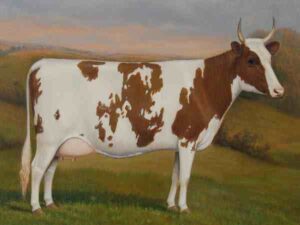Raising calves seems to be very easy, because they are small, very cute and adorable. But actually raising calves take a lot of time, money and effort.
Raising and caring for calves is the third highest cost on the cattle farm.
However, you can raise calves either from your existing flock or buy from the market. Here we are describing more about ‘how to raise calves’.
Raising Calves
First of all, consider why you actually want to raise calves. You can raise and care for the calves as potential freezer beef, a start of a breeding herd, as a pet or lawn ornament, and just in case you have calves in your flock.
As a beginner (if you don’t have calves), you have to purchase the calves from market or from any existing farms within your area.
Calves are expensive and sometimes can cost you up to a thousand Dollars. For example, a Holstein Frisian calf can cost you around $500, if the calf is a heifer.
But the bull calves are generally much cheaper. The choice is yours whether you want to purchase a heifer or a bull of any specific breed.
Prepare the Shelter
Before purchasing calves, ensure that you are giving them plenty of space to roam and frolic. Also ensure that the calves have a good shelter for protecting them from storms.
You should also build a little calf hutch if you are raising bottle calves. And a corral that is around 200 square feet will be sufficient enough for each calf for the first few weeks when you get them home, especially if you are going to buy older calf that is close to weaning or have weaned already.
Food and Water
Ensure availability of food and adequate water supply before purchasing calves. The bottle-raised calves require milk-replacer that is specially formulated for calves.
And the weaned calves or the calves that are pre-weaning can be fed small amounts of milk replacer that is watered down. So, ensure all these are available before purchasing calves.
Select the Desired Breed
After setting the shelter and having food and water supply ready, it’s time to select a breed. There are many breeds available to choose from.

You should select the breed depending on your needs. But it is always a good idea to choose such a breed which is easily available in your area.
Purchase the Calf and Bring Home
After selecting the breed, find a place near to your area that sells your desired breed. Probably you will be very lucky sourcing a calf at any of your nearest dairy farm.
You can look for an advertisement in a local newspaper, and also search your local online classifieds. It’s always good, to observe the calf/calves closely.
So visit the farm and observe the calf/calves closely before purchasing it. And finally bring the calf home.
Caring for Calves
After introducing the calves to their new home, they should be kept in a secure pen for the first few weeks. Doing this will allow them to settle into their new home.
The chances of escaping are quite high if you let them out into a pasture. Keep up with regular nutritious feeding and give them water as much as they want.
You should also monitor the body condition of your calves. Actually raising calves will be easy and the calves will grow well if you monitor their health or body condition on a regular basis.
You will need to separate the calf if it is getting thin, and increase the protein/energy in it’s diet. But you can cut back on the grain you are feeding the calf, if it is getting too fat.
You should always keep the calf clean. You should keep their living areas as clean and hygiene as possible.
Look for any symptoms of illness or diseases. You should call a vet right away if you notice some common symptoms such as diarrhea, coughing, constipated, ragged breathing, foaming at the mouth, runny or snotty nose, appearing lame, refusing to get up etc. Also talk to your vet for the kind of vaccinations that are necessary for your calves (this can vary from place to place, so consult with your vet). Read more about caring for calves.






